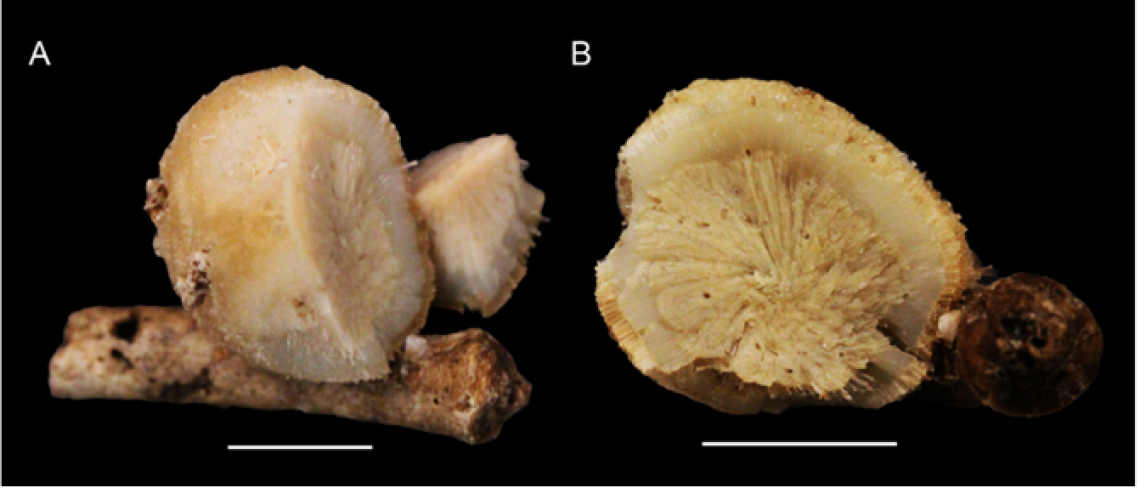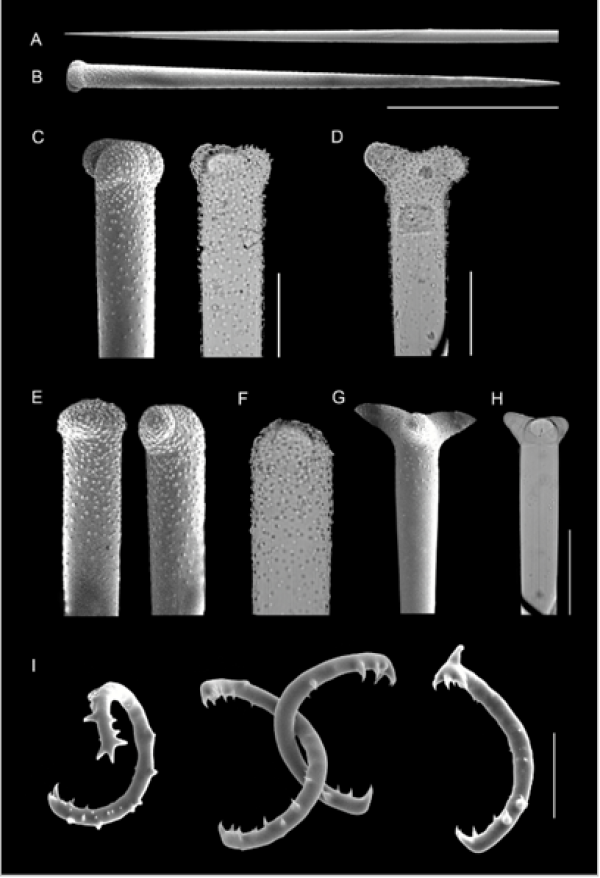Dr. Michelle Kelly of NIWA and Dr. Paco Cárdenas of Uppsala University, have just published a paper describing an amazing sponge which was found on a NIWA cruise to the Colville Ridge, north-east of New Zealand.
Amazingly, only a single specimen was collected and it has become the holotype and basis of a new family (Stupendidae), genus and species of sponge, Stupenda singularis Kelly & Cárdenas, 2016. This is equivalent in “wow factor” to discovering a new form of hominid, a taxonomic family of primates that includes the orangutan, the gorilla, the common chimpanzee and us humans!
New to science
Although it may not look like much to the casual observer the most fascinating aspect of this sponge is that it has a form of spicule, a major part of the sponge skeletal system, that has never been seen before anywhere else in the world, both in living and fossil sponge species!
For those that know sponge taxonomic terms the holotype of Stupenda singularis has the appearance of a tetillid sponge with a perfectly spherical external form, microspined sigmaspires and a radiating skeleton of huge oxeas and triaenes, but the triaenes are huge clubbed orthotriaenes, the upper third of which is acanthose.
To translate that: the type of spicule called a triaene is large, clubbed at one end, and finely prickly at the top third of it (see B and C).
Very unusual DNA
This sponge also has some very unusual DNA sequences inserted into one of the mitochondrial genes (a mitochondrial group I intron). This intron is the first of its kind in sponges and resembles similar introns in the Placozoa (small, Amoeba-like organisms) and fungi. This is an amazing find indeed!
Reference:
Kelly, M., Cárdenas, P. (2016) An unprecedented new genus and family of Tetractinellida (Porifera, Demospongiae) from New Zealand’s Colville Ridge, with a new type of mitochondrial group I intron. Zoological Journal of the Linnean Society, 2016, 177, 335–352. https://onlinelibrary.wiley.com/doi/abs/10.1111/zoj.12365


